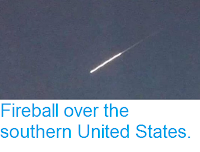Asteroid 2017 HG1 passed by the Earth at a distance of 1 078 000 km
(2.80
times the average distance between the Earth and the Moon, 0.72% of
the average distance between the Earth and the Sun), slightly before 10.00 pm GMT
on Wednesday 16 April 2017. There was no danger of the asteroid
hitting us, though had it done so it would have presented no threat.
2017 HG1 has an estimated equivalent diameter of 5-19 m (i.e. it is
estimated that a spherical object with the same volume would be 5-19 m
in diameter), and an object of this size would be expected to explode in
an airburst (an explosion caused by superheating from friction with the
Earth's atmosphere, which is greater than that caused by simply
falling, due to the orbital momentum of the asteroid) in the atmosphere
between 38 and 23 km above the ground, with only fragmentary material
reaching the Earth's surface.
The calculated orbit of 2017 HG1. Minor Planet Center.
2017 HG1 was discovered on 19 April 2017 (two days after of its closest approach to the Earth) by the
University of Arizona's Mt. Lemmon Survey at the Steward Observatory on Mount
Lemmon in the Catalina Mountains north of Tucson. The designation 2017 HG1
implies that the asteroid was the 32nd object (object G1) discovered in the second second of April 2017 (period 2017 H).
2017 HG1 has a 260 day orbital period, with an elliptical orbit tilted at
an angle of 7.09° to the plain of the Solar System which takes in to
0.56 AU from the Sun (56% of the distance at which the Earth orbits the
Sun; inside the orbit of the planet Venus) and out to
1.03 AU (3%
further away from the Sun than the Earth). This means that close
encounters between the asteroid and Earth are fairly common, with the
last thought to have happened in November 2014 and the next predicted
in November 2019. 2017 HG1 also has frequent close encounters with the
planet Venus, with the last though to have occurred in October 2012 next predicted for March 2021. Although it does cross the Earth's
orbit and is briefly
further from the Sun on each cycle, 2017 HG1 spends most of its time
closer to the Sun than we are, and is therefore classified as an Aten
Group Asteroid.
See also...







